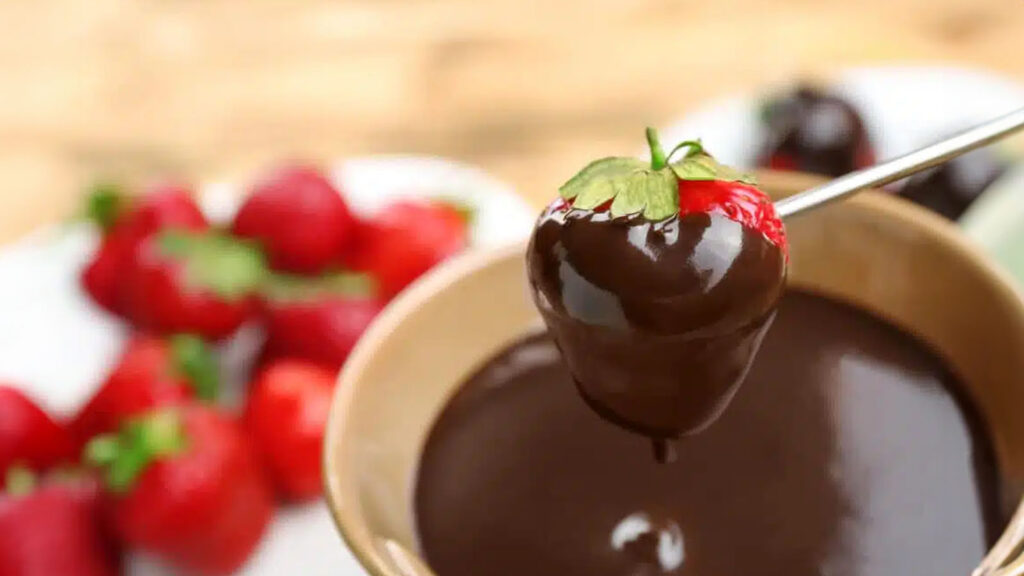
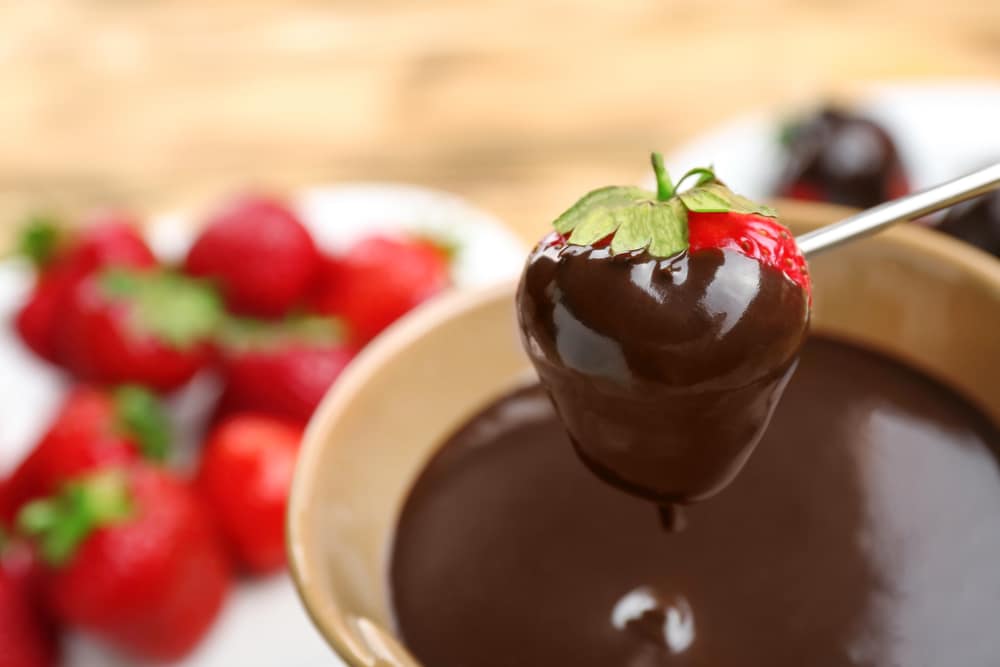
#1. Why Didn’t My Chocolate Ever Set?
You need to be patient when waiting for dipping chocolates to set, as it can take up to 20 minutes. However, if your chocolate hasn’t set, there are a few reasons why this could be.
It could be that your room temperature is too high. If the temperature is over 68 F, this can cause problems. The ideal setting temperature is between 65 and 68 degrees Fahrenheit. It could also be that the chocolate wasn’t tempered, because untempered chocolate takes quite a bit longer to set.
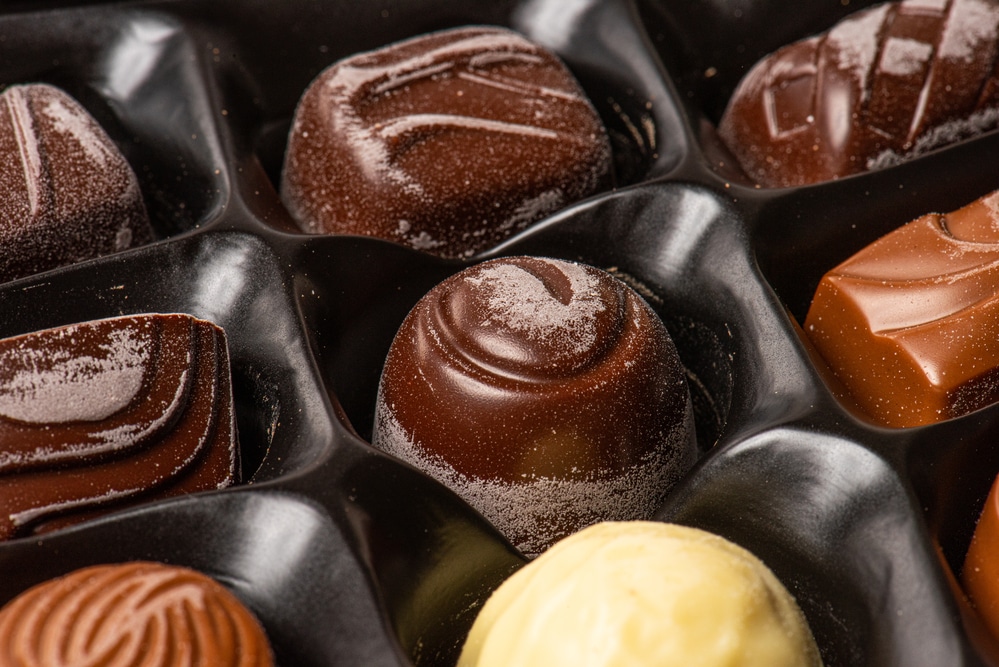
This is a difficult question to answer because it can be a couple of things.
If grainy streaks appear over time, it could be caused by not adding enough seed chocolate during tempering. If the streaks appear very soon after the chocolate sets, it’s probably caused by the cocoa butter not being fully integrated with the cocoa solids.
Your solution: stir, stir, stir.
You can also get streaks or splotches from temperature changes. As previously mentioned, chocolate needs to set at a temperature between 65 F and 68 F. If you put it in the fridge to cool and set, when you take it out, there may be condensation on your chocolate.
This is because water will pull sugar crystals to it and cause what is called sugar bloom – aka, those white streaks and splotches.
While chocolates with white streaks or splotches may look unappealing, they’re still edible! You can munch on the goodies that didn’t turn out how you wanted while putting your newfound knowledge to the test on a new batch of dipping chocolates.
This white film is called fat bloom. It’s said that fat rises to the surface of the chocolate through microscopic cracks, such as from the center. This is most common with chocolate-covered nuts, since nuts are so high in natural fats. Warm storage conditions can also cause fat bloom.
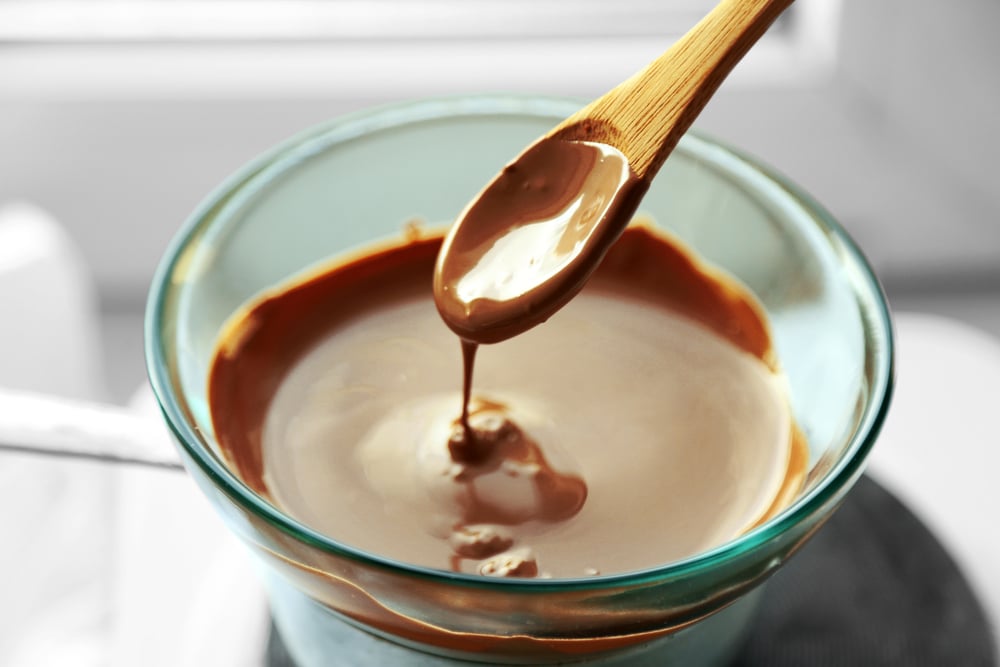
There are two problems that can cause your chocolate to harden.
First, you might have gotten water in it. This would cause it to seize. Despite the appearance of melted chocolate, it’s actually a very dry substance, with no water in it. Think of it like this: what happens when you put a drop of water in a bowl of sugar? The sugar crystals cling to the water and glob up.
It’s the same thing with chocolate. Get water in it, and the chocolate crystals cling to it, causing hard clumpiness.
At this point, is your dipping chocolate ruined? Yes and no. You won’t be able to use it for dipping, but if you add enough liquid (such as milk, cream, or water), it will thin back out and you can use it in baking or for hot chocolate.
It’s just like adding more water to the sugar. If you add enough water, the sugar crystals will dissolve and you’ll have something you can work with again in a different application.
Secondly, it may have burned. This can happen if the heat was set too high or if you didn’t stir it enough while melting it. Is your chocolate ruined? Well, in this case, yes, it is. There’s really no troubleshooting burned chocolate, as far as we know.
Yes, yes, it does. We learned this one the hard way. While trying to cool the house down quickly on a rainy night in preparation for dipping, we opened the windows. However, there was also a hot pot of soup on the stove simmering away for dinner. This led to lots of humidity.
Dipping went on, but as the chocolate was setting, it formed tiny speckles. Not the splotches mentioned above, just tiny little speckles that almost look like fat bloom from a distance. The chocolate set fairly quickly but was kind of soft and melted easily when touched.
Chocolate needs to be dipped in 50% or less humidity. It really shouldn’t be too much of a concern. Just don’t open your windows when it’s raining or dip right after a pot has been simmering on the stove.
Be aware of the humidity (but don’t obsess over it), and your dipping chocolate adventures should go better than ours did in the aforementioned instance!
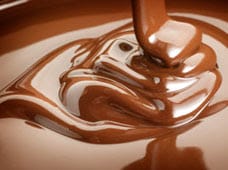
There are a few ways to melt chocolate, and it really just depends on who you are and what you like.
A lesser-known way to melt dipping chocolate is in a glass bowl with a heating pad between it and another larger bowl. This is a super slow method for melting, but it’s good for keeping your chocolate at a good dipping temperature.
We’ve also heard of people putting their chopped chocolate in a bowl and sticking it in a gas oven, letting the heat from the pilot light melt it.
Think about this: if you melt your chocolate so gently and slowly that it never gets above 89 F, it will not need to go through the tempering process because it hasn’t lost its temper.
Of course, this depends on the chocolate. Consult the manufacturer for verification. We do know that Peter’s chocolates will stay in temper if not heated above 89 F.

Well… we wouldn’t. First of all, chocolate chips have a higher viscosity (they’re thicker when melted), so they’ll coat really thickly. But mostly, we wouldn’t use them because they’ve had things added to them to help them retain their shape during baking.
So, you could use them, but it won’t turn out the same as if you use dipping chocolate.
We hope this helped solve your chocolate woes. If you still have questions, please don’t hesitate to contact us or attend one of our cooking classes. We here at Kitchen Kneads strive to help people in their baking ventures however we can.
Whether this is your first time trying to make something or you’re a seasoned pro, you can count on Kitchen Kneads for top-quality products and informative classes. Save

Kitchen Kneads is your one-stop shop for quality grains, flour, kitchen appliances, and other ingredients.
We are Utah’s premier baking and cooking resource!
Questions?


Kitchen Kneads is your one stop shop for quality grains, flour, kitchen appliances and other ingredients. We are Utah’s premiere baking and cooking resource! Questions?
888-881-9957
info@kitchenkneads.com
2022 | Kitchen Kneads | All Rights Reserved | Privacy Policy | Terms | XML Sitemap | Site by PDM
11 Responses
I feel I am fairly experienced in working with chocolate but am having great difficulty making chocolate dipped peanut butter bars. The bloom is HORRIBLE. Streaks and overall haze. Humidity is at 16%, cooling room is at 60-62 degrees, using seeded milk chocolate at 86-88 degrees. Can you please tell me what is happening? Thank you!
In our experience some chocolates can be rather temperamental. Some chocolates are very high in cream and cocoa butter and often suggested to stir and stir again when melting. If you do a lot of chocolate, we do carry a Chocovision tempering machine that is about $649. Other than that…stir, stir, stir.
When dipping foods in high fat it can be tricky. The fat in peanut butter can easily cause the chocolate to bloom. Freezing the peanut butter can help. Double dipping is another thing to help.
I am using the Delta, V revelation, chocolate melter. I melted 3 pounds of chocolate and poured it into several different molds. All of the molds, except one turned out great. One however, the color of the chocolate was very blotchy and streaky.
The next day, I melted another 3 pounds of chocolate and poured it into the same molds. This time it was a different mold that came out, very blotchy and streaky. The one that was very discolored the first day turned out beautiful.
I am using peters milk, chocolate wafers. I cannot figure out why most of the molds turned out beautiful, but one was all discolored, blotchy, and streaky.
The chocolate blotching and streaking is not just against the mold part, it is on the back that never touches the mold, also, which leads me to believe it is not that there is something on the mold, causing the discoloration.
Any advice?
Also, I am very interested in your classes. Can you give me the link to them? For whatever reason I could not find them on your website.
Also, another tip is that you can spray the mold with a type of spray release if you want a shiny coating or add paraffin wax to the chocolate
I am using a Choco vision Delta revelation to melt my chocolate. I melted 4 pounds of chocolate and poured it into a variety of molds. All of the molds, except one turned out perfect. The one turned out, very discolored, blotchy and streaky.
The next day, I melted another 4 pounds of chocolate, use the same molds, and this time, a different mold, turned out blotchy and streaky.
Can you please help me out? Also, I am interested in classes, but I cannot find them on your website
Any help is appreciated. Thank you.
Sorry for your frustration. Streaks and Blotchy chocolate is due to tempering and not getting enough mixing. Somewhere in the process it is separating and requires more stiring. Some chocolates have more/less cream and cocoa butter and may require more/less stirring depending on the amount of the cream and cocoa butter. We have one chocolate that is equivalent to a European chocolate and the manufacturer has to stir for 72 hours to get the ingredients to mix because of the extra cream/cocoa butter so that the consumer has a minimal amount of stirring. Also, if you can lower the temperature before putting in the refrigerator or dipping is optimal. There is a Easter Chocolate class coming up here soon. Hope that helps.
When I dip my strawberries in chocolate the chocolate runs down the stick and is not very pretty. How do I stop this from happening? I shake off excess chocolate but it still does it.
Thank you for your question. Make sure that the strawberry is patted dry after washing. If it is not due to not being dry enough, look at the type of chocolate that you are using. The chocolate may have a high viscosity (Thinness) or make sure that it is not diluted with butter or oil. We only use cocoa butter to thin the chocolate and be sure to make it too thin. Hope this helps
I was trying to coat roasted almonds but the chocolate just wouldn’t stick to them. Do they need to be cold before dipping perhaps? Worked better with u roasted almonds (skin on for both)
Yes